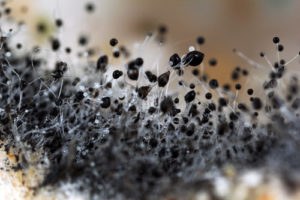What You Must Know About Mold Spores

Got Toxic Mold? What You Need to Know.
Everyone recognizes mold as a fungus found on dead plants and trees, but how much do you know about the effects of mold that finds its way indoors? Here’s a look at the role of mold spores and the importance of NYC mold removal.
How Mold Spores Function
Mold spores are the vehicles by which mold reproduces. While they’re similar in concept to a plant seed, they don’t contain pre-formed embryos. The dusty appearance of mold colonies is due to proliferation of spores on the surface.
Since mold spores are present indoors and outdoors, we inhale them every day. Concentrations are lower outdoors, so spores generally don’t pose a problem. Health risks arise from prolonged exposure to spores indoors, where space is constricted and air has less opportunity to circulate.
Control Mold Growth to Reduce Mold Spores
While it’s impossible to completely eliminate mold spores, controlling mold growth will keep them at a manageable level. Moisture is essential for mold to grow, so it’s imperative to keep indoor humidity low and immediately repair broken pipes or any conditions causing excessive moisture.
Approximately 20 percent of people are allergic to mold and suffer from symptoms such as sneezing, scratchy throat and watery eyes, known collectively as hay fever. Outdoor mold triggers allergies mainly during summer, whereas allergic reactions to indoor mold occur year-round.
Need NYC Mold Removal? Contact Stern Mold
Our MoldExterm program removes mold safely and effectively while creating a barrier to future growth. Contact us today for more information.


